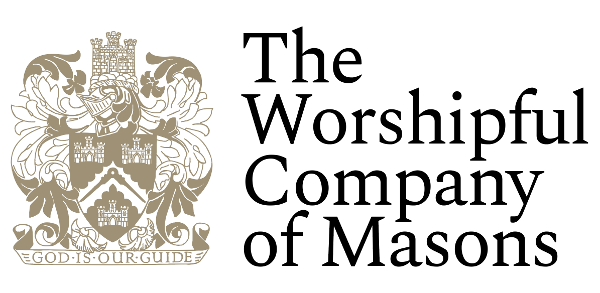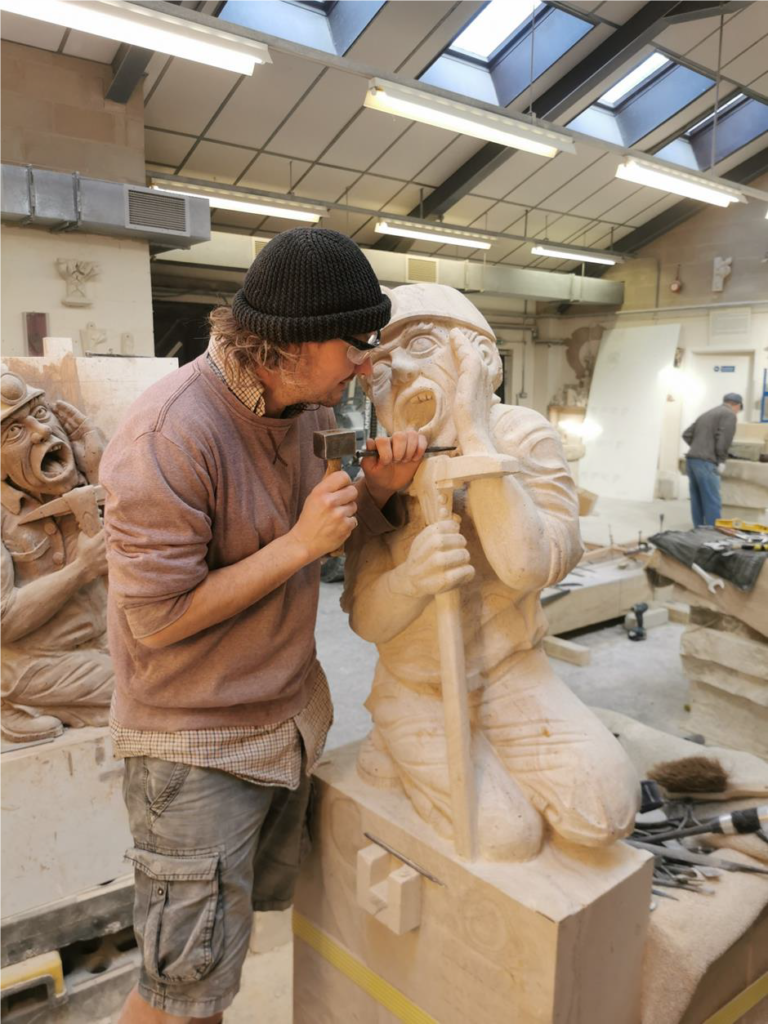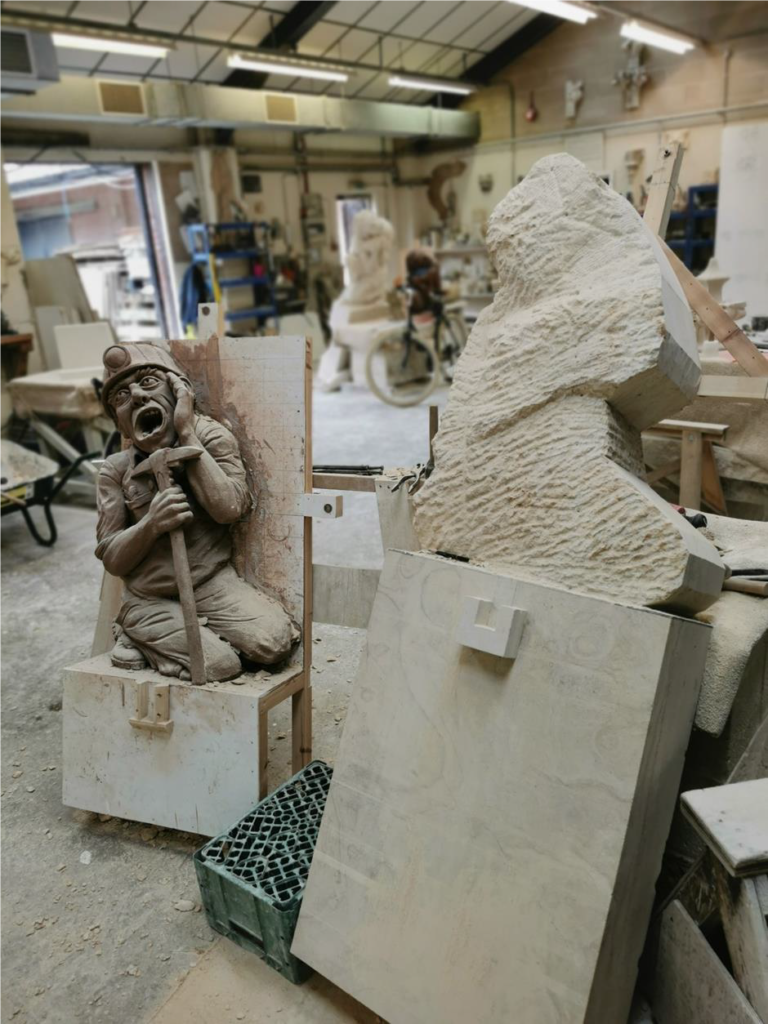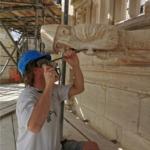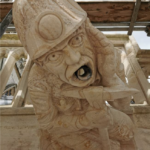
This year started well at Gloucester Cathedral, with two of the six gargoyles (each representing one of the six districts of Gloucestershire)
planned for the North Ambulatory project already fixed, two nearly finished in the workshop and two bays of the Fifteenth century parapet
conserved and rebuilt we had lots of interesting work ahead of us.
Then lockdown came and with it the
furloughing of three members of our
small team of six masons leaving us
in the unique position (as far as I am
aware) of being the only cathedral
workshop in the country to remain
open throughout the whole period. I
was one of those furloughed and
spent three months at home with my
wife and children, which is time that I
will always treasure, but I have to
admit to being happy to get back to
work, to see my colleagues and start
using my hands again !
The progress that my three
colleagues Pascal, Wieslaw and
James had made both in the banker
shop and on site while I was off, was
impressive working new stones and
fixing another two bays of parapet
and two gargoyles.
They had also cut out and repointed more cement mortar than I thought humanly possible in such a short space of time. Late 19th/early 20th century cement is the bane of our lives on every project at Gloucester cathedral, being non porous and glass hard it is the culprit for most of the damage suffered by the medieval stone. Despite their herculean effort, some aspects of the project inevitably had to be dropped due to the unexpected time constraints and left to the next generation of masons to address.
As for myself, since returning from furlough, I was happy to finish cutting out some remaining cement mortar before finishing the Forest of Dean miner gargoyle that I had carved at the end of last year. Although it had been fixed in December, the delicate pointed axe head could not be finished until all work on the bay next to it was complete. Our team is now back to full strength and there is only one gargoyle, a few bays of parapet and some pointing left to do. That may not sound like much, but it’s enough to keep the whole team going right up until we are due to start on the next project on the North Nave in December.
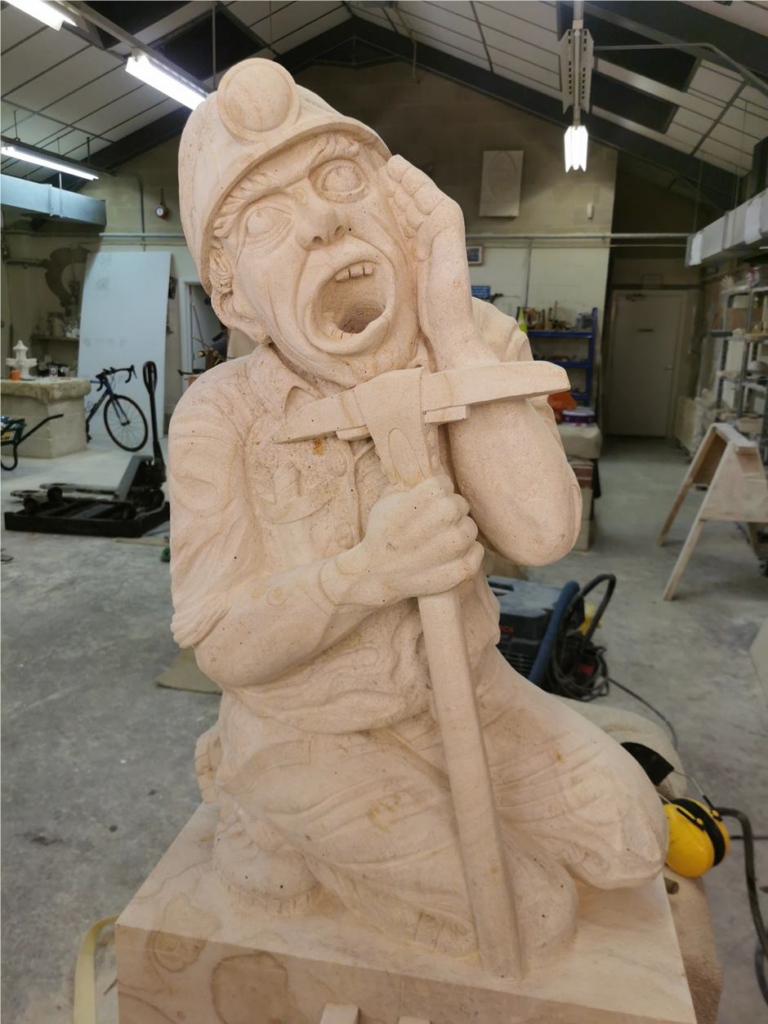
at ground level !
Coming back to the subject of gargoyles, and carving in general, I remember when I was training at the Building Crafts College in 2012. Stonemasonry was a change of career direction for me and on top of that at 34 years old I was a late to it and very worried that I would have a hard time making the transition into work whilst being able to continue building sufficient skill to be competent at work and support my family. So when I was on a college field trip and another older more experienced student saw me staring in awe at the skill that had gone into a Corinthian capital, he turned to me and said, “that’s not for the likes of us, you’ll never get a chance to do anything like that.”, I felt utterly demoralised. Why was I even doing
I have taken every opportunity I can to learn the basics of carving from the fantastically skilled people I have been lucky enough to work with since leaving college –it has been a once in a lifetime chance. I still haven’t carved a Corinthian capitol, but the pictures above provide a snapshot of the process of carving a gargoyle. The gargoyle was designed by the Master Mason, Pascal Mychalysin, it was my job simply to copy his 1:1 scale maquette using a pointing machine and later, as the carving developed, by eye. The stone used was the French limestone BeaunotteBeauval, which is used at Gloucester Cathedral as a weathering stone.
Clerk: Paul is being characteristically modest as, his lack of Corinthian capitol notwithstanding, he received a ‘Highly Commended’ award in the 2019 Duke of Gloucester’s Awards for excellence in the craft of stonemasonry!
